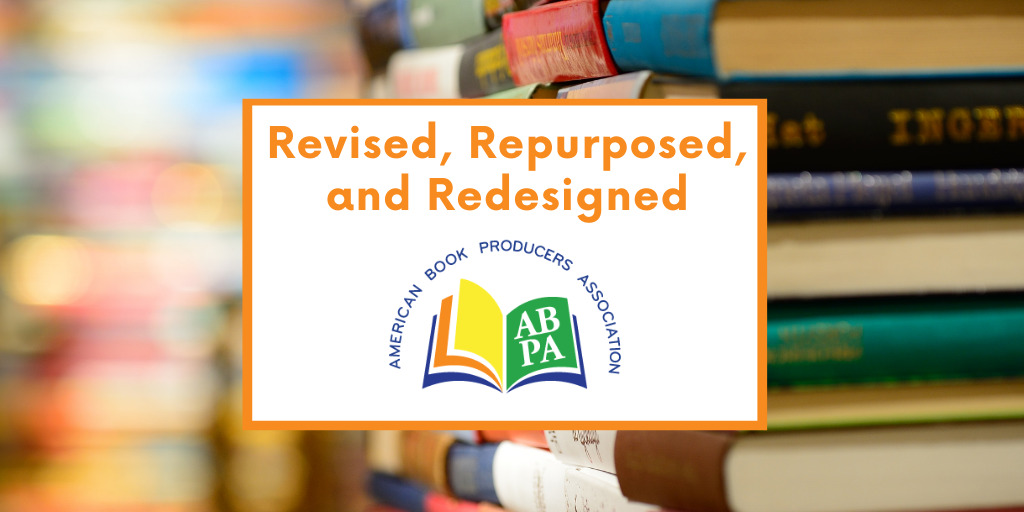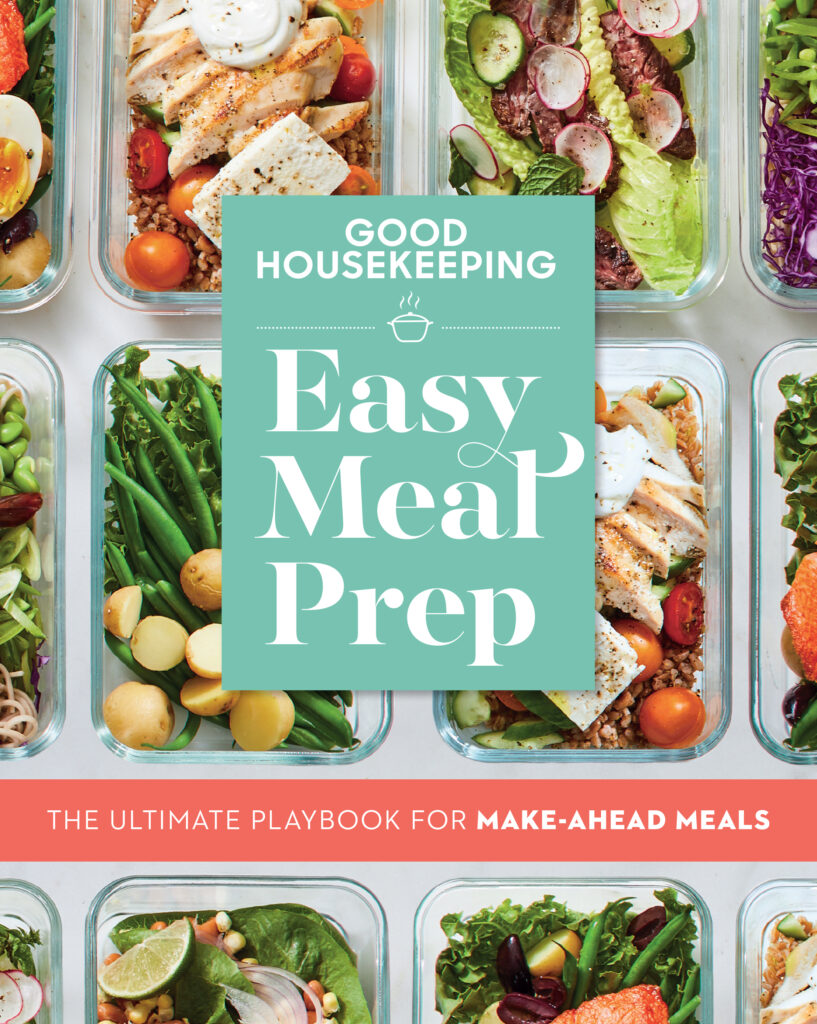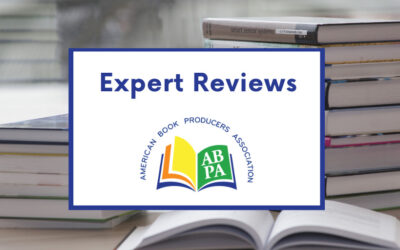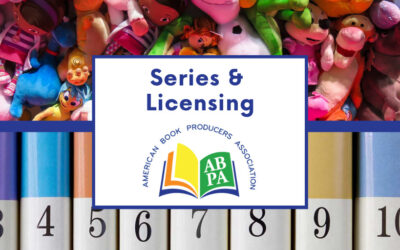
What’s Old Is New Again
While book packagers are generally called upon to produce new titles from conception through finished books or printer-ready files, they are also experts in revising, repurposing, and redesigning new editions of previously published texts. This might involve updating factual material, restructuring a volume from one format to another, or refreshing the design and art of a title on a publisher’s backlist to reintroduce it. With a few select changes, a project can acquire a second life and meet a whole new audience.
Back to the Sources
Acquiring and promoting the front list has always been a priority for publishers, but increasing attention is being paid to mining backlists for material. Richard Rothchild, president and publisher of Print Matters Productions and president of the ABPA, describes how his firm was able to give new life to a series of older cookbooks. Selling a new front list cookbook, Print Matters was able to negotiate a multibook deal to update and revise two additional cookbooks by the same author whose rights had reverted from the previous publisher. It was an effective way to return the author’s books to print and reach new readers on the coattails of the front list title.
Backlist titles can also be repurposed for a new format. This is what happened when a publisher approached Print Matters with a large illustrated book on home remedies that they wished to parse into “bookazines”—shorter, snappier texts that, as their name suggests, fall somewhere between books and magazines. After receiving the original manuscript from the publisher, Print Matters extracted select topics and edited them into cohesive 112-page bookazines. Using the “raw materials” from the original book, they reordered and revised the text, then added all new design and art elements to create two bookazines from the original volume.
Richard reminds packagers that in the case of older books, publishers might not have the original files for reference; so it may be necessary to work from scanned PDFs. Packagers can have PDFs professionally keyboarded to create easily editable Microsoft Word documents.
Changes in Direction
In some cases, there may be an additional challenge when digital files for the original book are not available. Richard relates one recent project where a single physical copy of the book was the only resource. Print Matters was hired to produce an American version of a Hebrew-language children’s title. In addition to translating the text, all the artwork had to be scanned from the book without damaging it and re-oriented due to the fact that Hebrew texts are read from right to left, the opposite of English-language texts. ABPA affiliate member Arnold Kirschner of the photo retouching firm PixFixer scanned the original book to create digital art files, which could then be modified to flow with the translated text.
Recipes for Success

Just as full-length books can be repackaged as bookazines, so can magazine content be assembled and reissued in book format.
ABPA member Girl Friday Productions is a full-service book production company based in Seattle that has used this method to create cookbooks. According to senior editor Emilie Sandoz-Voyer, the process of compiling magazine content into books “required some stylistic shifts to accommodate a smaller trim size and a more traditional cookbook layout.”
Another of Girl Friday’s cookbook-related repackaging projects involved preparing an independently published cookbook for release by a traditional publisher. The process meant working with more than just images and text. “A developmental edit flagged unusual recipe structures and ingredients,” Emilie relates, “after which we went through the text with the author to eliminate any errors and confirm processes for a few trickier dishes.” The Girl Friday team then rolled up their sleeves and went into the kitchen themselves. Emilie continues, “We divided up the recipes that needed a re-test, then dove in as a company to cook and check each one. A full copyedit and proofread smoothed out any lingering errors before the finals were ready for publication.”
Emilie adds that special consideration should be given to a previously published author during a revision of their work—after all, “they’ve published before, and they’re probably happy with their product!” Emilie advises “walking them through each step of the process and explaining the reasons behind suggested revisions” as a way to keep them on the same page with the publisher.
Knowing Your Audience
Girl Friday has also worked on reissuing books, both fairly recent titles and others that have been out of trade publication for nearly a century. For the recent books, says Girl Friday’s director of publishing partnerships Kristin Mehus-Roe, “the changes were more focused on adjusting the layout and cover to fit a new trim size or other need. For the older books, the focus was on repackaging the material for a new audience.”
Repackaging material clearly involves a lot of editing—cutting, revising, and reordering text to fit with new formats. Older texts can pose more specific challenges. In taking text from what Kristin describes as “a century-old Thoreau-style celebration of nature” and editing it for a modern audience, it soon became clear that “the sensibilities of the author were not going to be acceptable or comfortable for modern readers”; the difficulty lay in retaining the “flavor of the original text without keeping instances of harmful language.” Girl Friday’s editorial team resolved the problem by editing out the language and replacing some terms while using footnotes throughout the text to explain or contextualize why they had made those decisions.
 Resale Value
Resale Value
Book packagers might also consider the sales presentation of a book or other product when thinking about ways to repackage content. Nancy Hall, an ABPA board member and president of the packaging firm The Book Shop, Ltd., reveals, “One way that repurposing product has worked very well for me is to take two smaller products that have done well individually for a client and put them together in a deluxe format. A very successful example is a combination of two small body decorating kits that we repackaged together into a gift box for holiday sales that has performed very well for the past few holiday seasons.” This approach can help reduce costs, which makes the product more affordable and therefore more attractive to customers. Nancy explains, “Because all of the book development for the two titles was already completed, it was possible to price this product much more competitively than would have been the case if the books had to be created from scratch.”
Conclusion: Keeping It Fresh
Revising, repurposing, and redesigning is a lesser-known aspect of book packaging that provides many opportunities for producers, publishers, and freelance professionals alike. Whether you are scouring backlists for project ideas, reformatting books into bookazines or magazines into books, assembling new editions of lost classics that have fallen into the public domain, or seeking fresh ways to package and present your books on the sales floor, there are countless ways to give new relevance to older material. Who knows—the next bestseller might have been written years ago, just waiting for that special touch to revitalize it for today’s readers.
Read more from the ABPA
Expert Reviews
Areas of Expertise With their deep knowledge of all facets of book production, their professionalism, and their attention to detail, book producers can be counted on to provide factually accurate, tonally appropriate, and culturally sensitive books for a variety...
Series & Licensing
Creative License Book packagers are a uniquely creative lot. They are often tasked with developing titles from the original concept to the final product, overseeing all stages of production in between. However, sometimes a preexisting brand, character, or...
Pedagogy in a Time of Pandemic: School and Library Publishing
As the nation continues to endure the pandemic, new challenges have arisen for educators, students, and parents alike: ensuring proper safety protocols are in place in classrooms, adjusting to remote or distance-learning alternatives, and juggling family...



